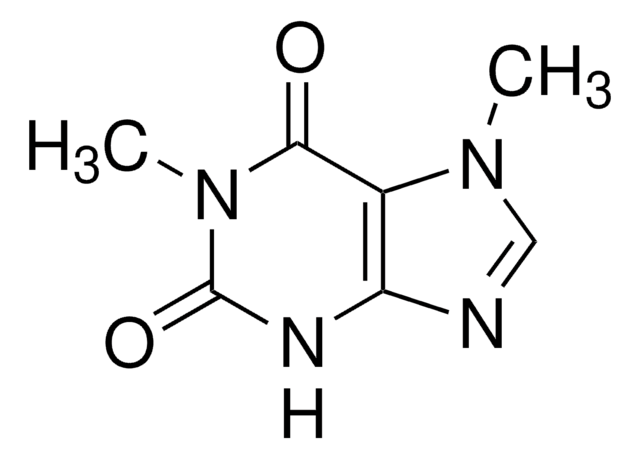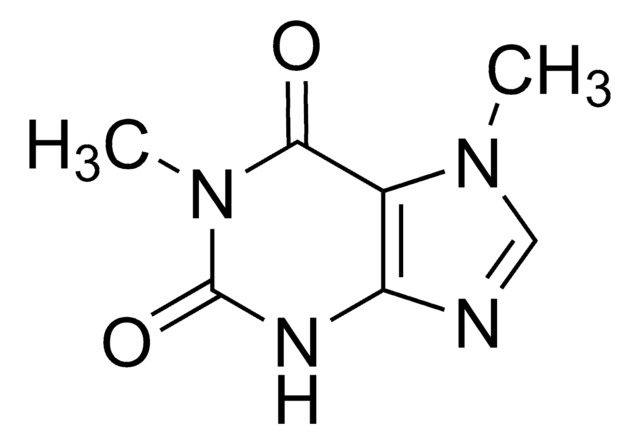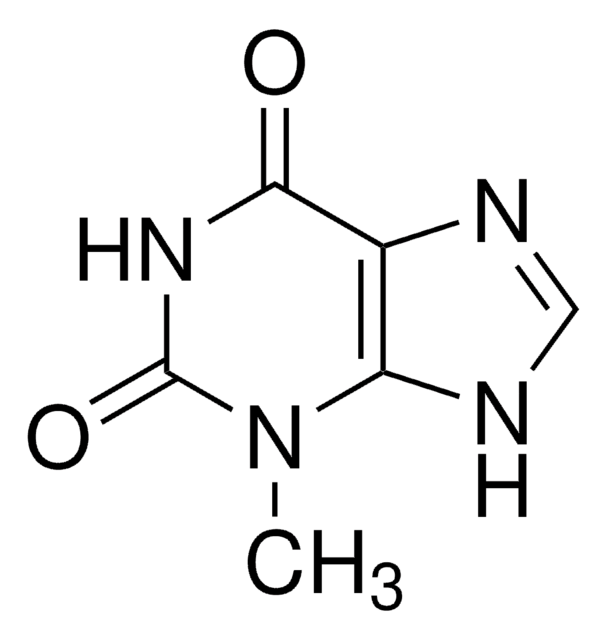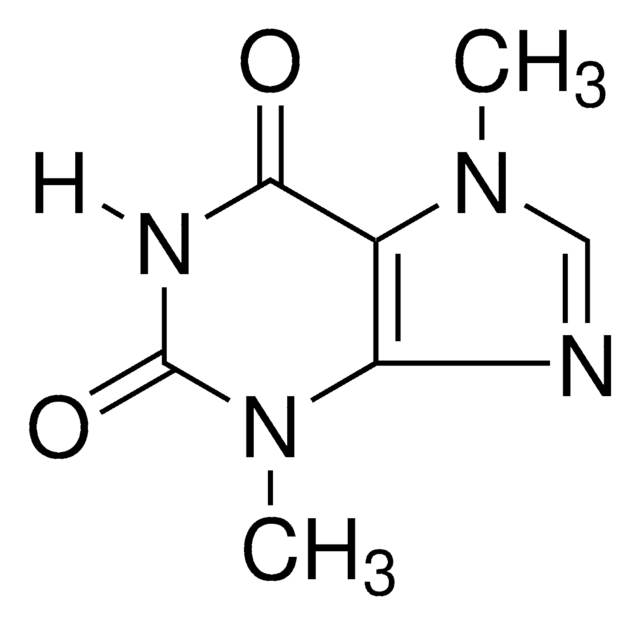Wichtige Dokumente
D0633
7-(2,3-Dihydroxypropyl)theophyllin
Synonym(e):
7-(2,3-Dihydroxypropyl)-3,7-dihydro-1,3-dimethyl-1H-purin-2,6-dion, Diprophyllin, Dyphyllin
About This Item
Empfohlene Produkte
Form
powder
Qualitätsniveau
mp (Schmelzpunkt)
161-162 °C (lit.)
SMILES String
CN1C(=O)N(C)c2ncn(CC(O)CO)c2C1=O
InChI
1S/C10H14N4O4/c1-12-8-7(9(17)13(2)10(12)18)14(5-11-8)3-6(16)4-15/h5-6,15-16H,3-4H2,1-2H3
InChIKey
KSCFJBIXMNOVSH-UHFFFAOYSA-N
Angaben zum Gen
human ... PDE3A(5139) , PDE4A(5141) , PDE4B(5142) , PDE4C(5143) , PDE4D(5144)
Suchen Sie nach ähnlichen Produkten? Aufrufen Leitfaden zum Produktvergleich
Biochem./physiol. Wirkung
Leistungsmerkmale und Vorteile
Signalwort
Warning
H-Sätze
Gefahreneinstufungen
Acute Tox. 4 Oral
Lagerklassenschlüssel
11 - Combustible Solids
WGK
WGK 3
Flammpunkt (°F)
Not applicable
Flammpunkt (°C)
Not applicable
Persönliche Schutzausrüstung
dust mask type N95 (US), Eyeshields, Gloves
Hier finden Sie alle aktuellen Versionen:
Besitzen Sie dieses Produkt bereits?
In der Dokumentenbibliothek finden Sie die Dokumentation zu den Produkten, die Sie kürzlich erworben haben.
Verwandter Inhalt
Cyclic nucleotides, including cyclic AMP (cAMP), cyclic GMP (cGMP) and cyclic ADP-ribose, have been extensively studied as second messengers of intracellular events initiated by activation of GPCRs. cAMP modifies cell function in all eukaryotic cells, principally through the activation of cAMP-dependent protein kinase (PKA), but also through cAMP-gated ion channels and guanine nucleotide exchange factors directly activated by cAMP.
Unser Team von Wissenschaftlern verfügt über Erfahrung in allen Forschungsbereichen einschließlich Life Science, Materialwissenschaften, chemischer Synthese, Chromatographie, Analytik und vielen mehr..
Setzen Sie sich mit dem technischen Dienst in Verbindung.







